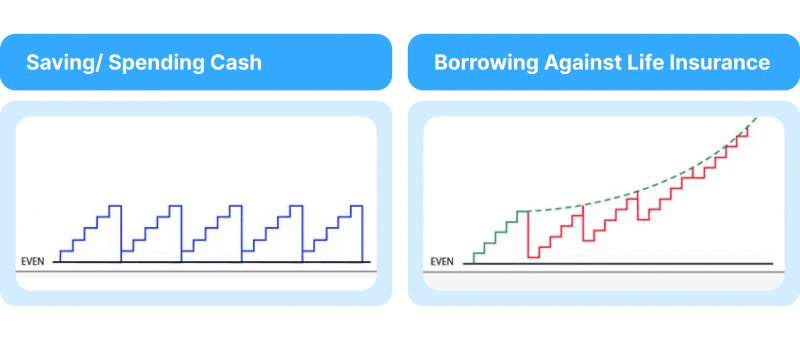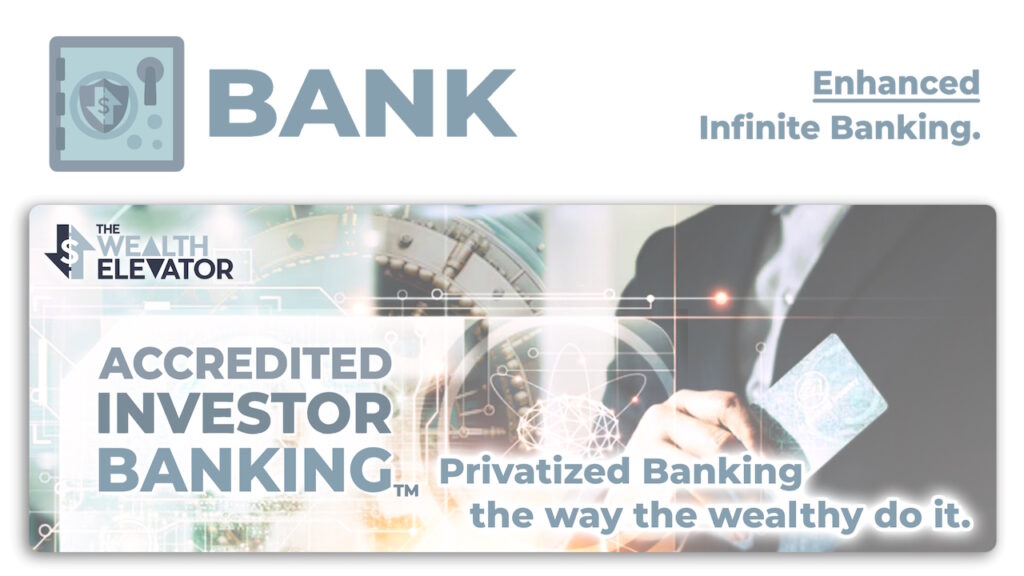All Categories
Featured
Table of Contents
Okay, to be reasonable you're truly "banking with an insurance policy firm" instead than "financial on yourself", however that concept is not as easy to market. It's a little bit like the concept of getting a home with money, after that obtaining against the house and placing the money to work in another financial investment.
Some people like to speak about the "rate of money", which primarily implies the very same thing. Actually, you are simply optimizing leverage, which works, yet, of course, works both ways. Frankly, all of these terms are rip-offs, as you will see listed below. That does not mean there is nothing worthwhile to this idea once you obtain past the advertising and marketing.
The entire life insurance policy industry is plagued by excessively expensive insurance policy, massive commissions, unethical sales practices, low rates of return, and badly educated clients and salespeople. But if you intend to "Count on Yourself", you're going to have to fall to this industry and really get whole life insurance coverage. There is no substitute.
The warranties integral in this product are important to its function. You can obtain versus the majority of sorts of money worth life insurance policy, but you should not "financial institution" with them. As you buy a whole life insurance policy plan to "financial institution" with, bear in mind that this is an entirely separate area of your monetary plan from the life insurance policy section.
Get a big fat term life insurance policy policy to do that. As you will certainly see below, your "Infinite Banking" policy really is not going to dependably provide this important economic feature. One more problem with the reality that IB/BOY/LEAP counts, at its core, on a whole life policy is that it can make buying a policy bothersome for numerous of those interested in doing so.
Ibc Infinite Banking Concept
Hazardous leisure activities such as SCUBA diving, rock climbing, skydiving, or flying also do not mix well with life insurance coverage items. That might function out fine, considering that the factor of the policy is not the death advantage, however keep in mind that getting a policy on small children is a lot more expensive than it needs to be considering that they are generally underwritten at a "standard" rate rather than a liked one.

Most plans are structured to do either points. The majority of commonly, plans are structured to make the most of the commission to the agent marketing it. Negative? Yes. Yet it's the fact. The compensation on a whole life insurance policy plan is 50-110% of the very first year's costs. Often plans are structured to take full advantage of the fatality advantage for the premiums paid.
The rate of return on the plan is really important. One of the best methods to make the most of that element is to get as much cash money as feasible right into the policy.
The finest method to enhance the rate of return of a policy is to have a reasonably small "base policy", and then placed even more money right into it with "paid-up additions". With more money in the plan, there is even more cash money worth left after the expenses of the fatality benefit are paid.
A fringe benefit of a paid-up addition over a normal costs is that the payment rate is lower (like 3-4% as opposed to 50-110%) on paid-up additions than the base policy. The much less you pay in compensation, the higher your rate of return. The rate of return on your cash money worth is still going to be adverse for some time, like all money worth insurance coverage policies.
Many insurance policy business only use "direct acknowledgment" lendings. With a direct recognition financing, if you borrow out $50K, the dividend price used to the cash money worth each year just uses to the $150K left in the plan.
Infinite Banking Concept Spreadsheet
With a non-direct acknowledgment funding, the company still pays the very same reward, whether you have actually "obtained the money out" (practically against) the policy or otherwise. Crazy? Why would certainly they do that? Who understands? But they do. Typically this attribute is coupled with some less helpful aspect of the policy, such as a reduced returns rate than you could obtain from a policy with direct recognition fundings (direct recognition whole life).
The companies do not have a source of magic complimentary cash, so what they give in one location in the policy must be extracted from an additional area. If it is taken from a function you care less about and put right into an attribute you care much more around, that is an excellent point for you.
There is one more vital feature, typically called "clean car loans". While it is excellent to still have dividends paid on money you have gotten of the plan, you still have to pay rate of interest on that particular funding. If the reward rate is 4% and the financing is billing 8%, you're not precisely appearing in advance.
With a clean funding, your finance rates of interest is the very same as the returns rate on the policy. So while you are paying 5% interest on the loan, that interest is totally balanced out by the 5% dividend on the loan. So in that respect, it acts much like you took out the cash from a checking account.

5%-5% = 0%-0%. Same same. Thus, you are currently "financial on yourself." Without all 3 of these factors, this policy just is not going to function quite possibly for IB/BOY/LEAP. The largest concern with IB/BOY/LEAP is individuals pressing it. Almost all of them stand to make money from you buying into this idea.
As a matter of fact, there are lots of insurance policy representatives speaking about IB/BOY/LEAP as a function of whole life that are not in fact marketing plans with the necessary functions to do it! The problem is that those that recognize the concept best have a huge conflict of interest and usually blow up the advantages of the idea (and the underlying policy).
Non Direct Recognition Whole Life Insurance
You must compare loaning against your plan to withdrawing money from your interest-bearing account. Return to the start. When you have nothing. No money in the bank. No money in investments. No cash in money worth life insurance policy. You are confronted with a choice. You can place the cash in the financial institution, you can spend it, or you can buy an IB/BOY/LEAP plan.
You pay taxes on the passion each year. You can save some more cash and put it back in the financial account to begin to gain passion once again.
When it comes time to buy the boat, you sell the financial investment and pay taxes on your lengthy term funding gains. You can conserve some more cash and acquire some more investments.
The money value not made use of to pay for insurance and payments expands over the years at the dividend rate without tax drag. It starts with unfavorable returns, yet ideally by year 5 or two has broken also and is expanding at the reward price. When you go to buy the watercraft, you obtain against the policy tax-free.
Ibc Full Form In Banking
As you pay it back, the cash you paid back starts expanding once again at the dividend price. Those all job pretty in a similar way and you can contrast the after-tax rates of return. The 4th choice, however, works really in different ways. You do not conserve any cash neither get any kind of sort of financial investment for many years.
They run your credit and provide you a lending. You pay rate of interest on the obtained money to the bank up until the lending is paid off. When it is repaid, you have an almost worthless watercraft and no money. As you can see, that is nothing like the initial three choices.
Latest Posts
Whole Life Insurance-be Your Own Bank : R/personalfinance
Can I Be My Own Bank
How To Become My Own Bank